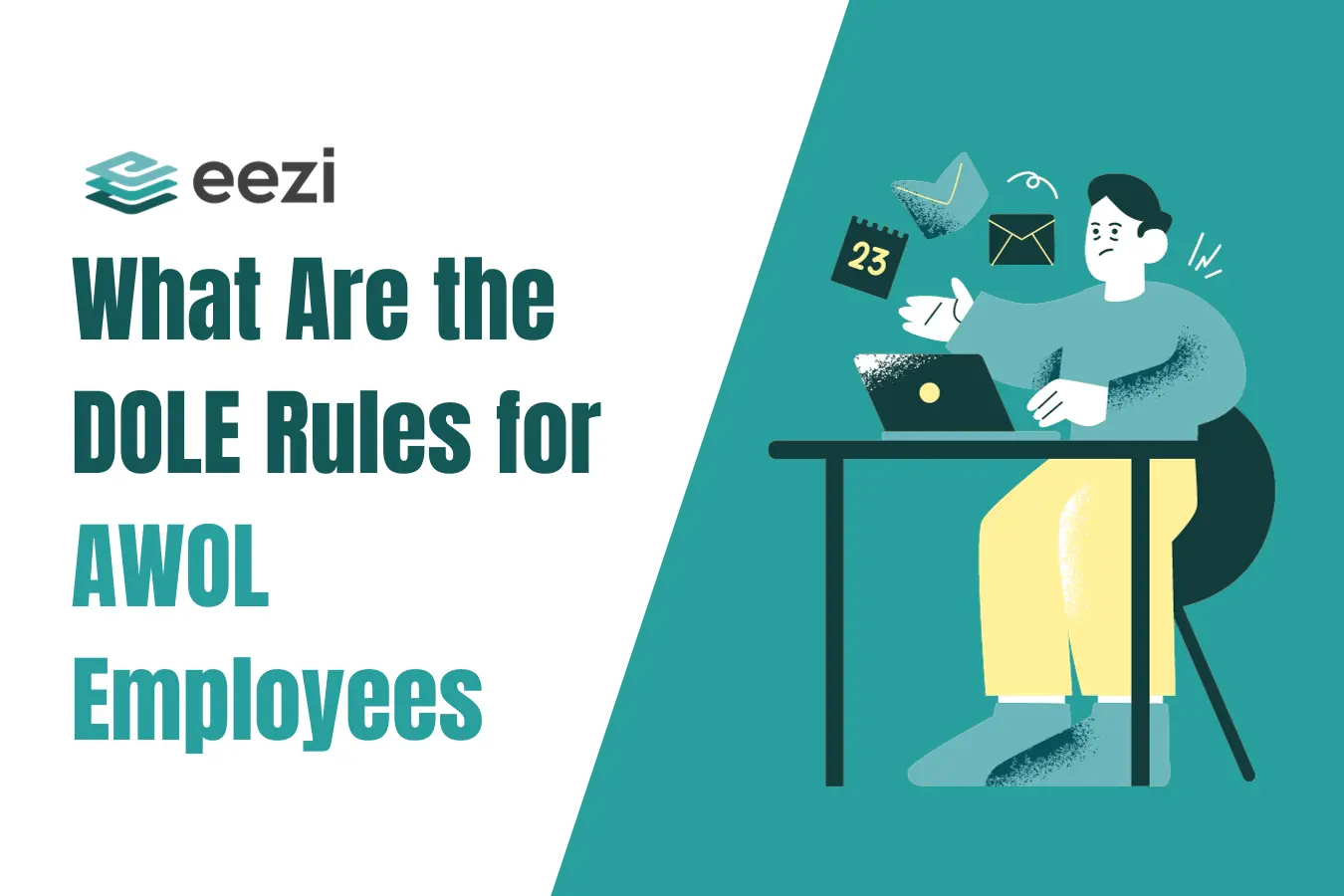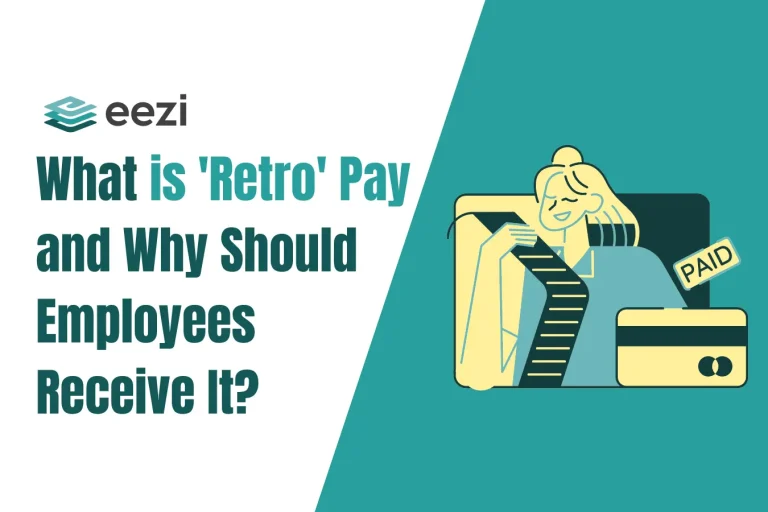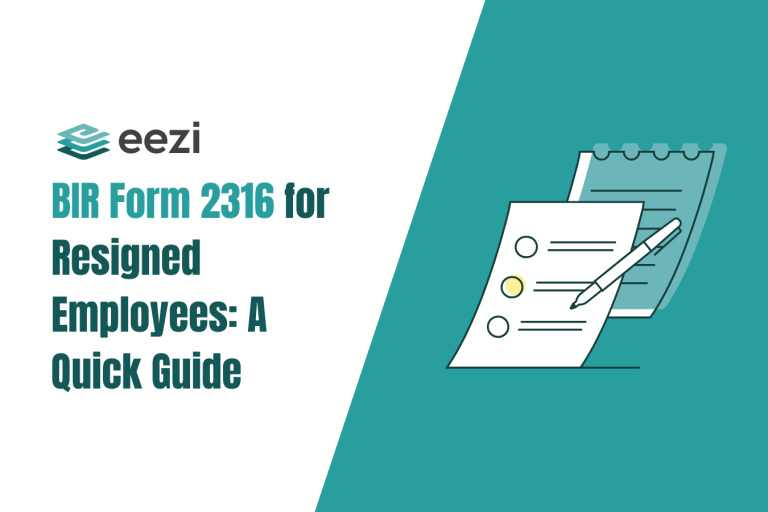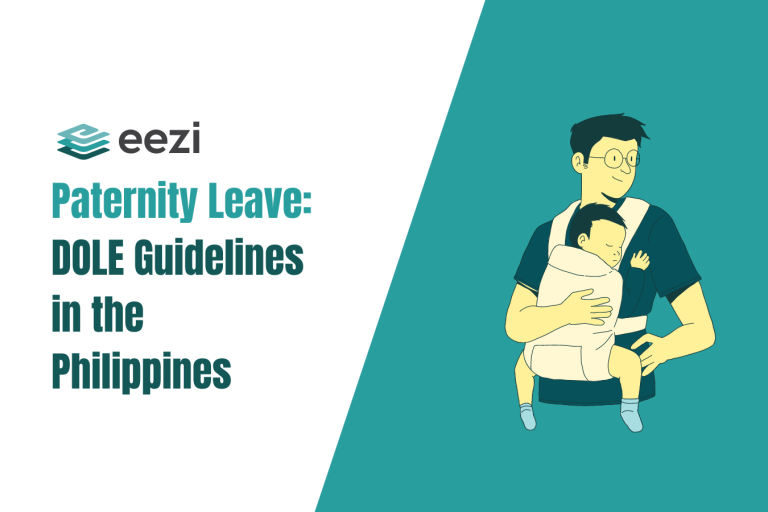How should AWOL employees be handled, and what are the DOLE rules?
Key Points
- AWOL or absent without official leave in the context of work and employment means an employee has gone absent without sending a notice or explanation
- When the AWOL amounts to an abandonment of duty, the employer may terminate the employee. However, it is the employer’s duty to provide proof of such.
- When terminating an employee who went AWOL, the Labor Code requires employers to issue a written notice to the employee and allow them to present their defense.
- Though on AWOL, an employee may still request a COE from their employer as they are still understood to be connected.

When you are frustrated with your career, it can be tempting to quit without notice and not bother about exiting gracefully. What people don’t readily realize is that there are plenty of reasons to go graciously. One of them is the threat of having an AWOL status.
AWOL meaning
Absence without official leave, or AWOL, is originally a military term that refers to soldiers who leave their posts.
AWOL in work
In a workplace environment, the term AWOL applies to an employee who went absent without explanation. Moreover, employers see this as a form of misconduct and a significant offense.
Going missing or being absent without proper notice may lead to an AWOL status, which can greatly affect your career path.
The role of team leads on AWOL employees
For team managers, business owners, or supervisors, dealing with an employee who goes absent without leave or AWOL is a difficult process.
However, as long as they follow due procedure, this allows employers the authority to terminate an employee who went missing or absent without permission for a long period without a note of explanation.
Are AWOL employees entitled to separation pay?
Employees who go AWOL, meaning they leave their jobs without formal authorization, are not entitled to separation pay. This is because going AWOL is essentially a violation of the job contract. As such, the termination resulting from this behavior does not entitle the employee to separation pay.

What should be done if an employee goes AWOL?
An employee can be absent without leave if they skip work without following company policies. It can also describe a worker who disappears for long periods, and whose whereabouts are unknown to his supervisors or managers.
Check applicable labor codes
Certain employment laws can apply when an employee goes absent without leave or permission. Always consult the Labor Code when considering termination or dismissal based on the employee’s length of service. This reduces the risk of a potential wrongful dismissal or other related workplace discrimination.
Attempt communication
Attempt emailing, texting, and calling to determine what is happening to the employee who went AWOL. Or try reaching out to their emergency contact person or next of kin.
Consider the situation
The reasons for the employee’s absence could have a significant impact on how you respond to it. When choosing a suitable course of action, ask yourself the following questions:
- What is the employee’s general attendance history?
- Are there any health issues, household issues, or personal issues that you are aware of?
- Has the employee recently been involved in any arguments or disputes at work?
- Is there any cause to think they may be a target of bullying at work?
- Is there anything going on at work right now that is particularly challenging or stressful?
- Does the absence fall on a day when a request for a holiday or other leave was rejected?
Impose disciplinary actions
Discipline for unauthorized absences is a totally normal and proper response. However, they should only apply after you have looked into the reasons for the absence. Moreover, you must ensure that there are no welfare, health, or personal factors that would merit a reassessment.
Follow your company policy or standard disciplinary procedure. At the very least, this means giving the employee the chance to be represented by a coworker or union representative. Moreover, it should be enough time for them to submit a defense or mitigating circumstances.
Taking unapproved leave may constitute gross misconduct, depending on the extent of the employee’s awareness of their action. The reasons surrounding the absence and the duration of the absence must also be considered.
Keep in mind that employees must submit a prior notice or resignation letter in order to leave lawfully.

What are the guidelines for AWOL employees?
Unauthorized absences from duty or resignations are included in AWOL. As long as they follow due procedure, employers have the authority to terminate an employee’s employment.
When can an employer legally terminate an employee?
In accordance with Article 297 [282] of the Labor Code, an employer has the legal authority to end an employee’s tenure under specific circumstances, which include:
- Severe misconduct, deliberate infringement, or willful disobedience of the employment directives established by the employer or their designated representatives.
- Consistent and severe neglect of the employee’s responsibilities.
- Engaging in fraudulent activities or a purposeful betrayal of the employer’s trust.
- Committing an offense or violation against the employer, their family, or duly appointed representatives.
- Other comparable reasons are akin to those aforementioned.
It is important to note that being Absent Without Leave (AWOL) can be a form of dereliction of duty, and the law recognizes it as a similar cause under Article 297 [282].
What does the law consider an abandonment of duty?
Abandonment of duty, as per legal standards, hinges on the fulfillment of two key criteria:
- The employee must have been absent from work without a valid or justifiable reason.
- There must be clear, overt actions indicating the employee’s explicit intention to sever the employer-employee relationship.
It’s important to note that the burden of proof rests on the employer. Thus, as the employer, you need to show proof that these two conditions have indeed been met.
What should employers do with AWOL employees?
In handling AWOL (Absent Without Leave) situations, employers must diligently follow the principles of procedural due process. This entails the following steps as specified in Article 292 [277] of the Labor Code:
- Initiate the process by issuing a written notice to the employee under consideration for termination, delineating the reasons justifying the termination.
- Afford the employee a reasonable opportunity to be heard and present their defense. This should align with the company’s rules and regulations, which must adhere to the standards set by the Department of Labor and Employment.
Additionally, it is imperative to furnish a second notice or a formal notice of termination as part of the process.
What should be in the second notice?
The following must be included in the second notice:
- A comprehensive consideration of all circumstances pertaining to the allegations against the employee.
- Clear and substantiated justifications for the termination of their employment.
Are AWOL employees entitled to COE?
A Certificate of Employment (COE) typically contains comprehensive information about an individual’s employment history with a current or former employer. This document commonly includes the following details in accordance with the Philippine Labor Code:
- Confirmation of your hiring by the company.
- An overview of the specific roles and responsibilities you undertook during your tenure, typically within a specified timeframe.
- The COE generally features the start and end dates of your employment as per the Labor Code. It may also include any positions you held during your employment.
In some instances, your HR department may choose to include additional information, such as your compensation or an assessment of your overall work performance. However, it’s important to note that the entitlement to a COE is not typically dependent upon whether an employee has been absent without leave (AWOL) or not.
Related: DOLE guidelines for exiting employees
Monitor your employees’ performance and attendance easily
With eezi HRIS, you get access to all of your employee’s data, such as employment and job performance.
With its impressive features, eezi helps in digitizing and automating the essential tasks of your human resources department. Visit our website to find out more!



